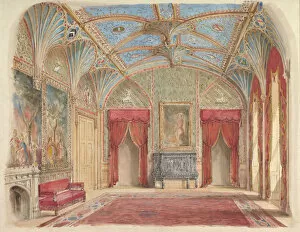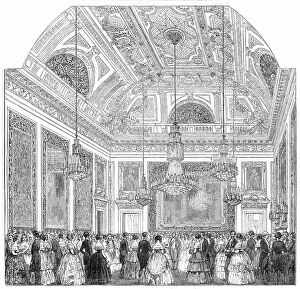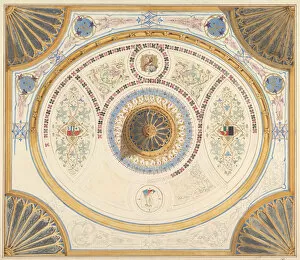Crace John Gregory Collection
John Gregory Crace (1824-1881): A Visionary British Decorative Artist John Gregory Crace was a prolific and influential British decorative artist of the 19th century
For sale as Licensed Images
Choose your image, Select your licence and Download the media
John Gregory Crace (1824-1881): A Visionary British Decorative Artist John Gregory Crace was a prolific and influential British decorative artist of the 19th century. Known for his exquisite designs in various media, Crace left an indelible mark on the decorative arts scene, from the Drawing Room at Eastnor Castle in Hertfordshire (ca. 1850) to the International Exhibition Building in 1862, where he served as Superintendent of Decoration. Crace's artistic journey led him to the enchanting Alhambra in Spain (1855), where he drew inspiration from the Court of Lions for his own designs. His repertoire expanded to include intricate stained glass windows (19th century), as well as grandiose ceilings adorned with coffers, fan supports, and figural medallions. His designs for rooms with two fireplaces (ca. 1860) and simplified Third Pompeian Styles (ca. 1870-90) showcase his versatility and mastery of various styles. Crace's work graced numerous interiors, including Cleish Castle and the Gallery Wall (19th century), and his coffered and painted ceilings in rust and olive green, as well as those with portraits and Corinthian order, continue to captivate audiences today. Crace's legacy as a visionary decorative artist is evident in his timeless designs and the enduring impact they have had on the world of interior design. His work remains a testament to the power of artistry and creativity in shaping beautiful and inspiring spaces.













